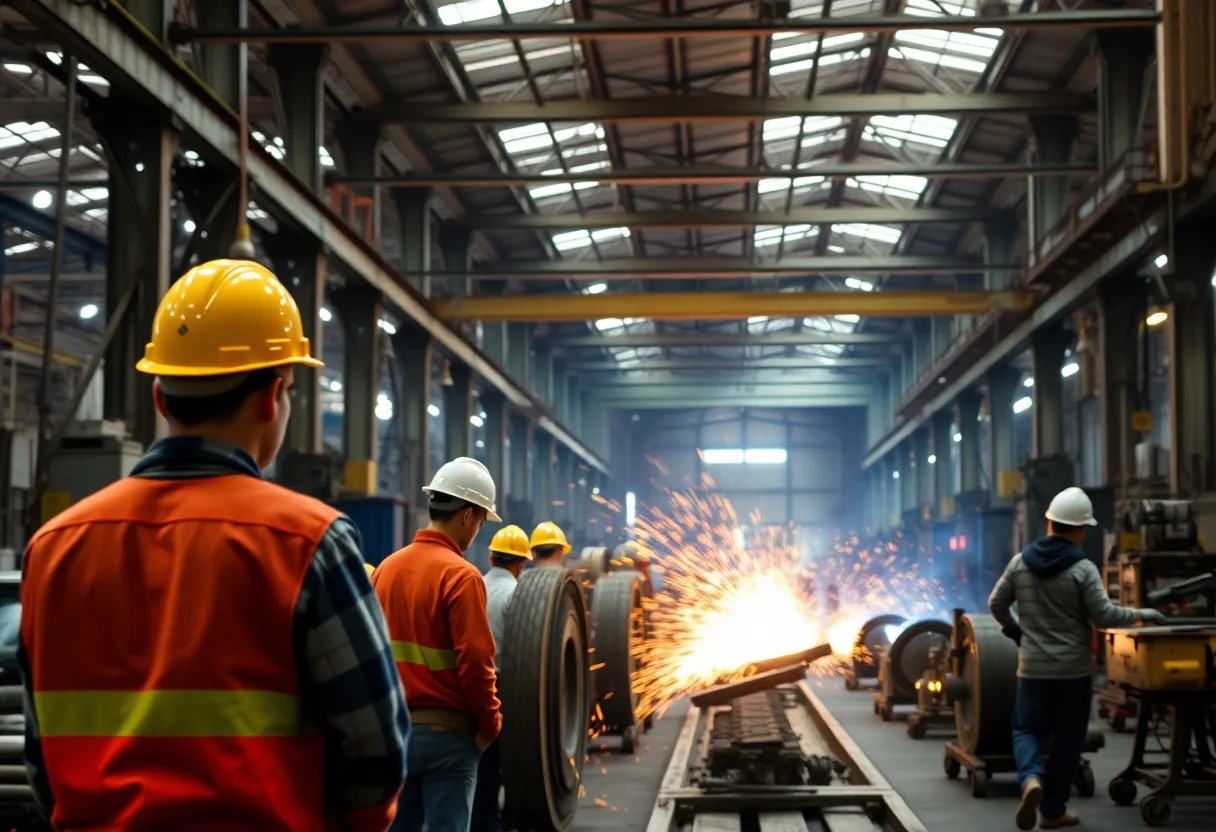News Summary
President Trump has announced a new round of 25% tariffs on all imports of steel and aluminum, effective March 4, 2024. This move aims to boost domestic production but raises concerns about rising prices and potential trade disputes. While domestic steelmakers welcome the tariffs, companies reliant on imported metals may face challenges. The implications of these tariffs could ripple through various industries, potentially leading to increased consumer prices and tensions with major trading partners like Canada and Mexico.
Trump’s Tariff Comeback Sends Waves Through Steel and Aluminum Markets
In a striking move that echoes his earlier term, President Trump announced a new round of *25% tariffs* on all imports of steel and aluminum. This decision is set to take effect on March 4, 2024, reigniting discussions about trade practices and manufacturing in America.
Why the Tariffs?
The primary aim of these tariffs is to encourage American industries to ramp up domestic production of steel and aluminum. By making imported metals more expensive, the tariffs are expected to give a leg up to local manufacturers and protect them from foreign competition. It’s being described as a *big deal* for the country’s industrial landscape.
No Exemptions in Sight
It’s notable that there will be no exemptions for American companies that rely on imported steel and aluminum. This means that even those businesses that typically source their materials from abroad will be paying the higher tariffs. This could spell trouble, as many industries depend heavily on these metals for manufacturing a multitude of products.
Domestic Steelmakers Rejoice
On the flip side, domestic steel producers are cheering this announcement. They have been advocating for protection against foreign imports for quite some time. The tariffs have already led to a noticeable rally in shares of major U.S. steel producers like Cleveland-Cliffs, Nucor, and U.S. Steel, showing that investors are optimistic about the potential boost in business from these protective measures.
Global Implications
However, not everyone is happy about this news. Major suppliers of steel and aluminum to the U.S., particularly Canada and Mexico, are likely to push back against these tariffs. Such backlash could lead to *retaliatory actions* against U.S. exports—after all, no one likes to feel like they’re being hit unfairly at the trading table.
History Repeats Itself
This isn’t Trump’s first rodeo with steel and aluminum tariffs. His earlier tariffs from 2018 had a similar goal, but the results were mixed. While it did lead to a boost in local production, it also sparked trade disputes and contributed to rising prices for consumers. This time around, analysts are cautious and expect a similar pattern, with possible increases in *consumer goods prices* across various sectors.
The Numbers Game
Looking at the data, it’s interesting to see how U.S. metal imports have changed over the years. From 2014 to 2024, steel imports have dropped significantly by 35%, while aluminum imports have surprisingly increased by 14%. In total, the U.S. imported steel from *79 countries* and aluminum from *89 countries*, racking up a whopping *$49 billion* in total import value in 2024 alone.
Possible Ramifications
Many worry about the potential chain reaction that could come from these tariffs. Prices for industries that rely on steel and aluminum—like automotive and construction—could rise, leading to *production shortages*. Moreover, if U.S. trading partners feel pinched, there is a chance they could band together to push for trade liberalization measures, making this a pivotal moment in international relations.
What Lies Ahead
Looking forward, it’s crucial for American importers and consumers to keep an eye on how these tariffs will impact their wallets. Experts are hinting that unless exemptions are granted for U.S. companies, American consumers might soon find themselves paying more for everyday products. So, whether you’re in the market for a new vehicle or renovations for your home, brace yourself for potential price hikes.
In Conclusion
As these tariffs roll out, the conversations around trade and manufacturing are bound to heat up. It’s definitely a case of “watch this space” as the implications unfold. With both domestic and international stakeholders gearing up for what lies ahead, it’s safe to say the steel and aluminum saga is far from over.
Deeper Dive: News & Info About This Topic
- CNBC: Global Winners and Losers of Trump’s Steel and Aluminium Tariffs
- Google Search: Trump tariffs steel aluminum
- Reuters: Asian, EU Steelmakers Shares Fall After Trump Escalates Tariffs
- Wikipedia: Tariffs
- The New York Times: Trump Tariffs on Steel and Aluminum
- Encyclopedia Britannica: Tariff
- CNN: Trump Tariffs Steel Aluminum
- Google News: Trump tariffs







